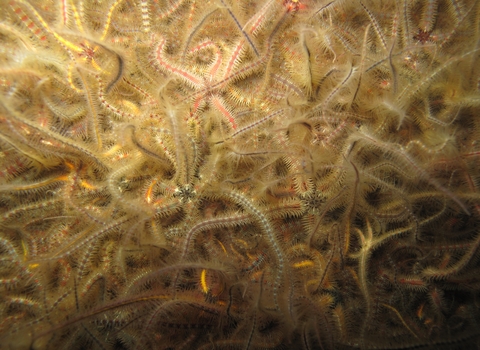
Common Brittlestars ©Polly White/Earth in Focus
Common brittlestar
This large brittlestar can be found in rockpools around much of the UK, but be gentle - its arms are very brittle and will break off if disturbed.
Scientific name
Ophiothrix fragilisWhen to see
January to DecemberSpecies information
Category
Statistics
Diameter: up to 2cm Average Lifespan: 5-10 yearsCommon
About
Brittlestars are related to starfish and have a rounded disc-like body with 5 long, thin flexible arms. They really do live up to their name and will shed parts of their arms if they are disturbed or feel threatened. So look but don't touch!Common brittlestars are found all around our coasts, in rockpools in the lower shore and offshore to depths of 85m. They live on the seabed and raise their long legs into the water current to filter feed, catching plankton and detritus.
They are often found in dense aggregations where food is plentiful - with numbers of 2000 per square metre recorded.
How to identify
There are several species of brittlestar found in British seas, which can be difficult to tell apart. Common brittlestars vary in colour, from dull brown to purple, red, orange and yellow. Their spiny legs are patterned with coloured bands.Their fragile arms are often broken off if found in rockpools - a sign of past disturbance or predation.
